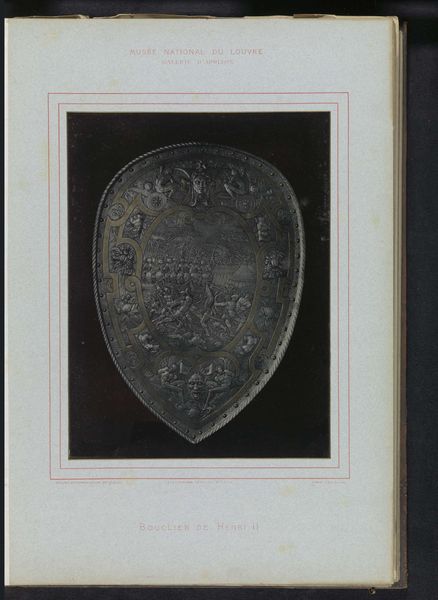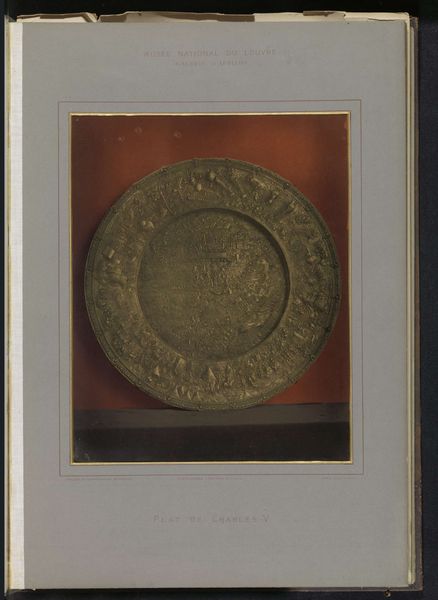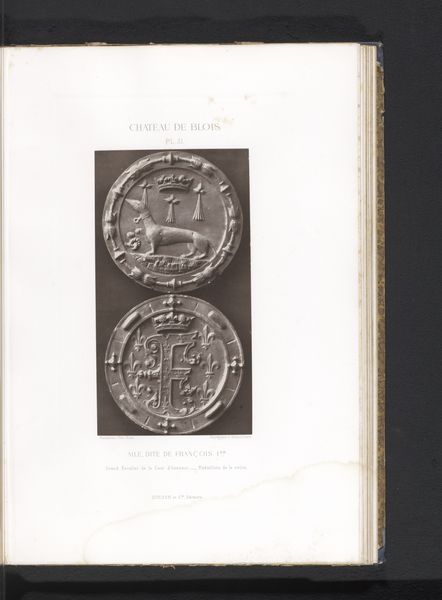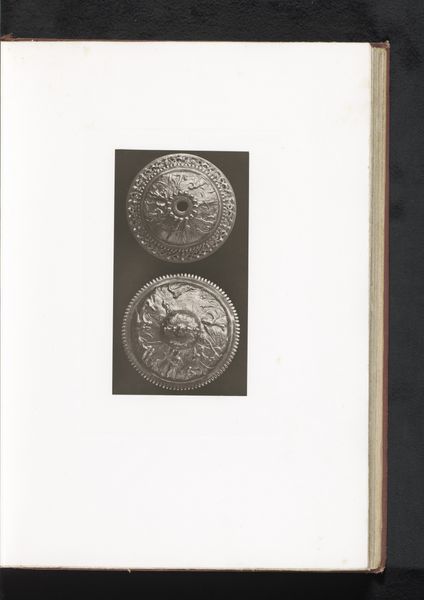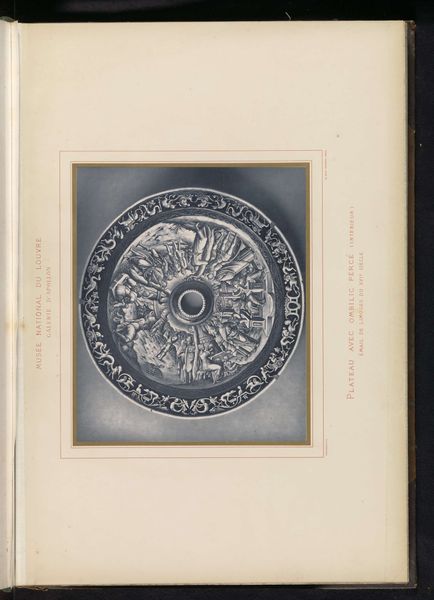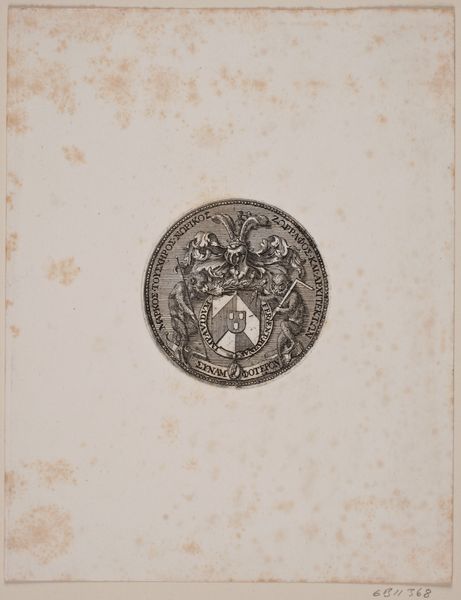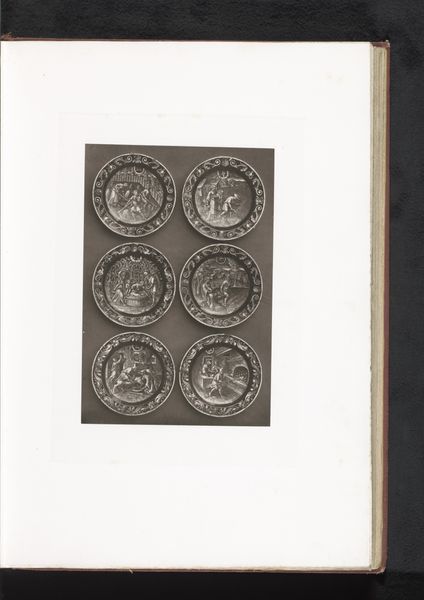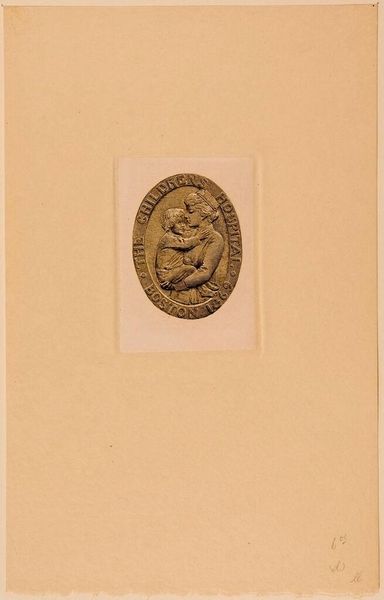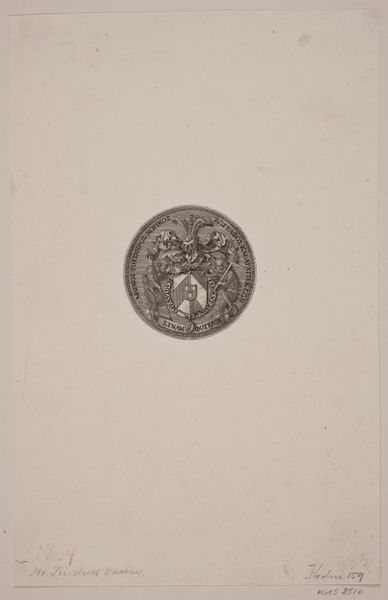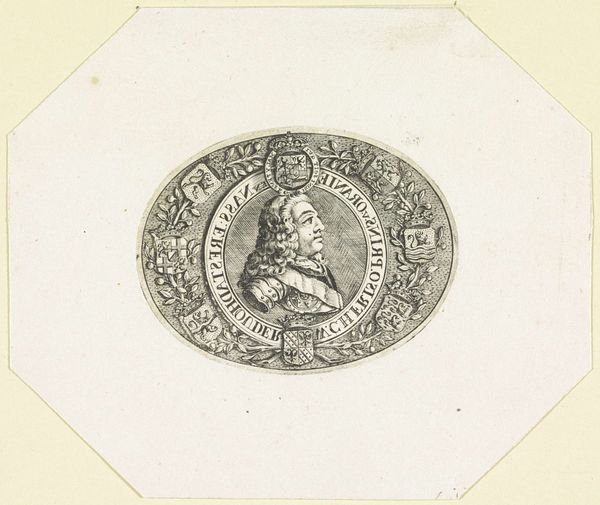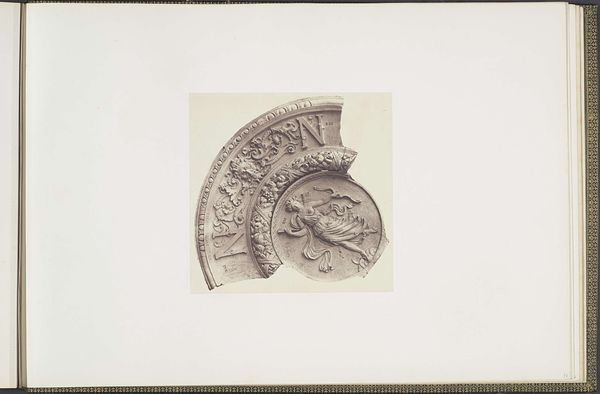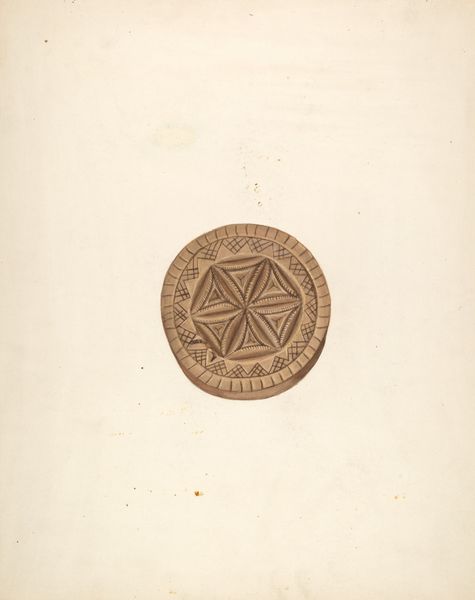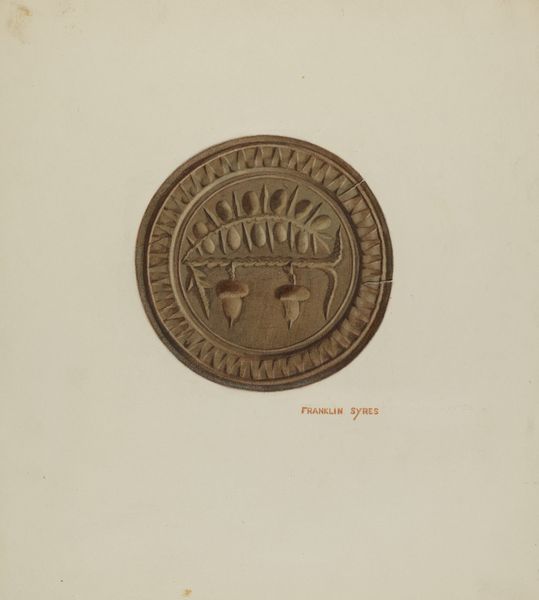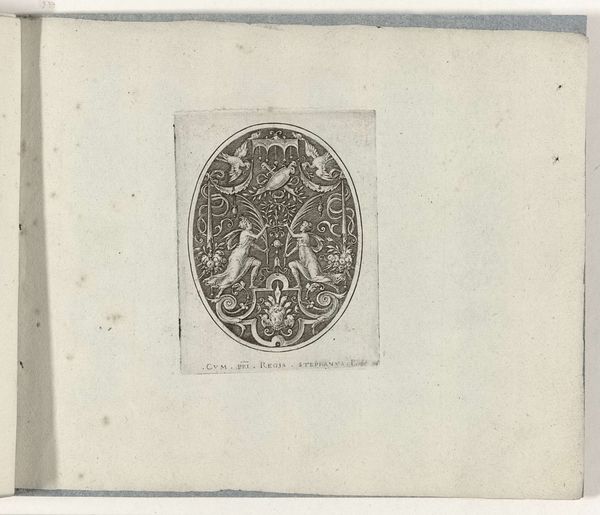
Geëmailleerd eetbord door Pierre Reymond, voorstellende de maand januari c. 1876 - 1883
0:00
0:00
print, intaglio, ceramic
#
allegory
# print
#
intaglio
#
sculpture
#
ceramic
#
sculptural image
#
11_renaissance
#
decorative-art
Dimensions: height 230 mm, width 277 mm
Copyright: Rijks Museum: Open Domain
Curator: The object we're examining is an enameled plate by Pierre Reymond, dating back to sometime between 1876 and 1883. It's titled "Geëmailleerd eetbord door Pierre Reymond, voorstellende de maand januari," which translates to "Enameled Plate by Pierre Reymond, depicting the month of January." Editor: My first thought is how dense the imagery is, all tightly packed into a relatively small circular space. It gives the piece a very ornate, almost claustrophobic feeling. Curator: Yes, Reymond’s piece certainly exemplifies decorative art. Considering it depicts January, it connects to traditions where each month holds symbolic weight tied to labor, nature, and astrology. The plate as object reinforces cycles, of life, labor, feasting. Editor: It's interesting how the imagery appears to be referencing Renaissance sculptural relief. January often conjures the aftermath of celebration, but also new beginnings, however I find a striking class dimension, given only certain bodies and identities throughout the era have been afforded “new” beginnings at the dawn of each year. I wonder who would have used and seen this plate? Curator: Right, the allegory embedded within it points toward themes of renewal and perhaps providence given the material richness. The very act of depicting it on ceramic reinforces themes of craft, patience and endurance – think of how fired clay carries the traces of the artist forever. I am intrigued with the potential ritual dimension and emotional weight associated with repeated use across generations. Editor: The style certainly positions it within a context of lavish display. In that respect, does it function as a reinforcement of social hierarchy, freezing certain cultural codes and patterns of access, within a seemingly neutral, even innocent, scene? It's hard to overlook how decorative arts often naturalize relations of power. Curator: Indeed. Perhaps it’s not so much an idealized scene but a reflection of the specific cultural values and worldview that were prevalent during the decorative art movement and its emphasis on historical reference. Ultimately it embodies memory and craft, reminding us of the Renaissance, its revival periods, and their continued resonance, even on the surface of something as mundane as a plate. Editor: So, an ornate object inviting consideration of the power dynamics inscribed in cycles of time and craft, then. Not bad for a plate!
Comments
No comments
Be the first to comment and join the conversation on the ultimate creative platform.
